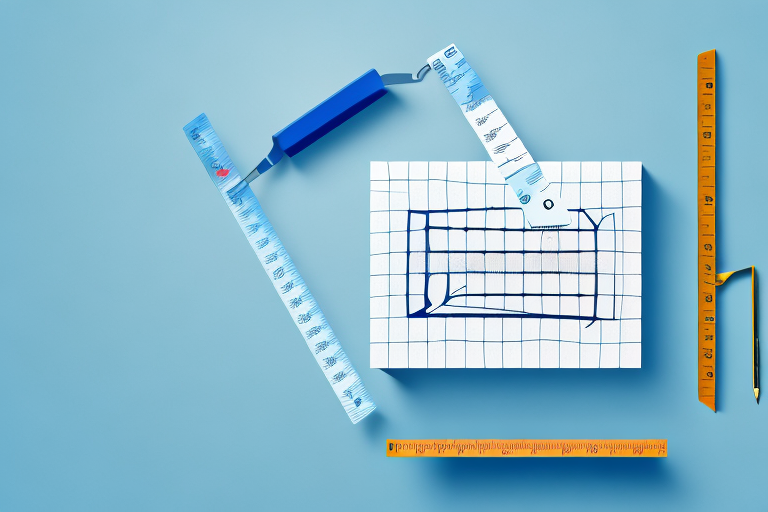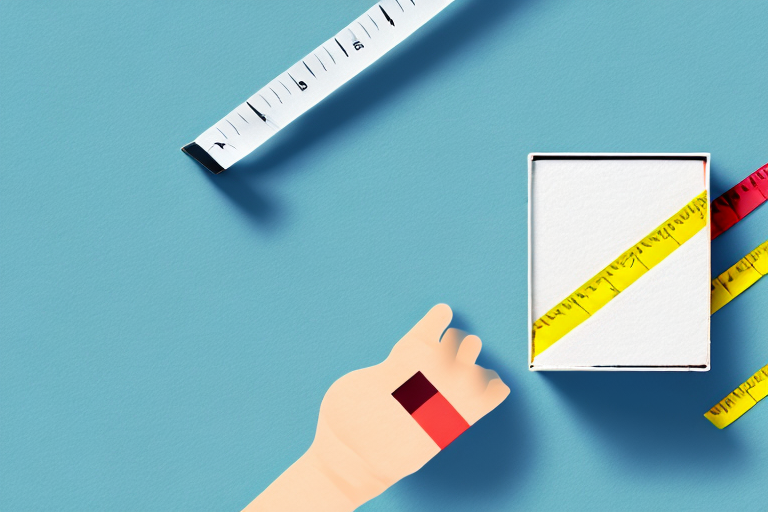How to Measure Box Dimensions: A Step-by-Step Guide
Accurately measuring the dimensions of a box is crucial when it comes to shipping and packaging. Even a slight miscalculation can result in extra costs or damage to the contents inside. In this article, we’ll take you through a step-by-step guide on how to measure box dimensions in the most precise and efficient way possible.
Why Accurate Box Measurements Are Important
Before we begin, let’s discuss why accurate box measurements are so important. When shipping products, carriers charge based on the size and weight of the package. Using accurate dimensions ensures that you won’t overpay for shipping. In addition, properly measuring the box helps to protect the contents inside. If a box is too small, items may be jammed in, risking damage during shipment. On the other hand, over-sized boxes use more materials than needed, thus increasing the cost of packaging. For these reasons, it is essential to have the correct dimensions of the box before you begin shipping or packaging.
Another reason why accurate box measurements are important is that it helps to optimize storage space. If you have a warehouse or storage facility, knowing the exact dimensions of your boxes can help you to stack them efficiently, maximizing the use of your available space. This can save you money on storage costs and also make it easier to locate and access your products when needed. Therefore, taking the time to measure your boxes accurately can have a significant impact on your bottom line and overall business operations.
Tools Needed to Measure Box Dimensions
Before you start measuring your box, it is best to make sure you have the appropriate tools on hand. You’ll need a measuring tape, a ruler, and a pencil or pen. For larger boxes, consider using a yardstick or a level. Having these tools readily available will make the process of measuring your box quicker and more efficient.
It is also important to note that the accuracy of your measurements will depend on the quality of your tools. Make sure your measuring tape or ruler is not bent or warped, as this can affect the accuracy of your measurements. Additionally, if you are measuring a box with uneven sides or angles, you may want to consider using a protractor or angle finder to ensure precise measurements.
Preparing the Box for Measurement
Before you begin measuring the box, make sure that it is empty and free of any debris or packing materials. Also, ensure that the box is on a flat and level surface. This will help to ensure that you’re getting accurate measurements since boxes that are not on level ground can appear larger on one side than the other.
Additionally, it is important to make sure that the box is not damaged or dented in any way. Any dents or creases can affect the accuracy of your measurements. If you notice any damage, it is best to use a different box for your measurements.
Measuring the Length of the Box
The length of the box is the longest side of the box, so begin by measuring this first. Place your measuring tape or ruler at one end of the box and extend it to the other end. Be sure to write down the length measurement in inches or centimeters.
Once you have measured the length of the box, you can move on to measuring the width and height. The width is the shorter side of the box, and the height is the distance from the bottom to the top of the box. Use the same method of measuring with your tape or ruler, and record the measurements for each side.
It’s important to accurately measure the dimensions of the box, especially if you plan on shipping it. Shipping companies often have strict size restrictions, and if your box is too large, you may incur additional fees. Additionally, if the box is not properly measured, it may not fit the contents securely, which could result in damage during transit.
Measuring the Width of the Box
The width of the box is the second-longest side and is perpendicular to the length. Place your measuring tape or ruler at one end of the width and extend it to the other end, making sure that your measurement is at a 90-degree angle to the length measurement. Again, be sure to write down the width measurement in inches or centimeters.
It is important to note that the width measurement is crucial in determining the size of the box and ensuring that it fits its intended purpose. If the width is too small, the box may not be able to hold the desired contents, while a width that is too large may result in unnecessary space and wasted materials.
Additionally, when measuring the width of a box, it is important to take into account any protrusions or irregularities that may affect the measurement. For example, if the box has flaps or handles that extend beyond the width, these should be included in the measurement to ensure an accurate size.
Measuring the Height of the Box
The height of the box is the shortest side and is perpendicular to both the length and width. Place your measuring tape or ruler at one end of the height and extend it to the other end, making sure that the measurement is at a 90-degree angle to both the length and width measurements. As before, write down the height measurement in inches or centimeters.
It is important to note that the height measurement should be taken from the bottom of the box to the top, including any lids or flaps that may be present. If the box has a curved or irregular shape, it may be necessary to take multiple height measurements at different points and calculate an average.
Additionally, if the box is not standing upright, but rather lying on its side, the height measurement will be the distance between the two shortest sides, which are perpendicular to the length and width respectively.
Calculating the Volume of the Box
To calculate the volume of the box, multiply the length by the width and then multiply the result by the height. The formula is:
Volume = Length x Width x Height
If your measurements are in inches, the volume will be in cubic inches. You can convert this to cubic feet by dividing by 1728. If your measurements are in centimeters, the volume will be in cubic centimeters.
It is important to note that when measuring the length, width, and height of the box, you should use the same unit of measurement for all three dimensions. This will ensure accurate calculations and prevent errors in the final volume measurement. Additionally, if the box has any irregular shapes or curves, it may be necessary to break it down into smaller, simpler shapes to calculate the volume accurately.
Measuring an Irregularly Shaped Box
If you have an irregularly shaped box, such as a cylinder or sphere, calculating the dimensions is a little different. For cylindrical boxes, measure the diameter (distance across the opening) and the height. For spherical boxes, measure the distance across the widest part of the sphere (the diameter) and the height. Once you have these measurements, you can use the appropriate formula to calculate the volume of the box.
It’s important to note that for irregularly shaped boxes, the volume calculation may not be as straightforward as it is for regular boxes. You may need to use more complex formulas or break the shape down into simpler components to calculate the volume accurately.
Another factor to consider when measuring irregularly shaped boxes is the accuracy of your measurements. Since these shapes can be more difficult to measure precisely, it’s important to take multiple measurements and average them to get a more accurate result.
Tips for Accurate Box Measurements
When measuring your box, the accuracy of your measurements is key. Here are some tips to help you get the most precise measurements:
- Make sure to use high-quality measuring tools that are not bent or warped.
- Measure all sides of the box, including length, width, and height.
- Account for any protruding parts, such as handles or hinges.
- Take multiple measurements for irregularly shaped boxes and average them.
- Measure the box when it is in its final form, with flaps closed and secured.
Taking the time to measure accurately can save you from costly mistakes and ensure that your box fits its contents perfectly.
Common Mistakes to Avoid When Measuring Boxes
There are some common mistakes that people make when measuring box dimensions. Be sure to avoid these to ensure that you’re getting the most accurate measurements:
- Not taking into account the thickness of the box material.
- Measuring the box when it’s not in its final form (flaps not closed, etc.).
- Using inconsistent units of measurement.
Another common mistake to avoid when measuring boxes is not taking into account the thickness of the box material. This can significantly affect the internal dimensions of the box and lead to incorrect measurements. It’s important to measure the thickness of the box material and subtract it from the external dimensions to get the accurate internal dimensions.
Additionally, it’s important to measure the box when it’s in its final form. This means that if the box has flaps, they should be folded down and secured in place before measuring. If the box has a lid, it should be closed. Measuring the box in its final form will give you the most accurate dimensions for shipping or storage purposes.
Understanding Different Units of Measurement
When measuring your box, you’ll use either imperial or metric units of measurement. While both systems of measurement work, it’s important to make sure you stick with one consistently. Imperial units use inches while metric units use centimeters. Ensure that, when converting between these two systems of measurement, you do so accurately to avoid mistakes.
Using Software to Measure Box Dimensions
If you’re shipping or packaging items on a regular basis, it may be beneficial to use software to help take measurements. There are several software options available that can take automatic measurements of boxes, providing more accurate and efficient measurements.
Comparing Different Methods for Measuring Boxes
There are several ways to measure boxes, including using a measuring tape, yardstick, or software. While all of these methods can work, their effectiveness may vary. Consider testing each method and selecting the one that is most accurate and efficient for your needs.
Conclusion: Importance of Accurate Measurements in Shipping and Packaging
Accurately measuring box dimensions is an essential part of shipping and packaging, as it ensures that you get the most cost-effective and efficient solution for your needs. By following the steps outlined in this guide, you can be sure that you’re getting accurate measurements every time.






















